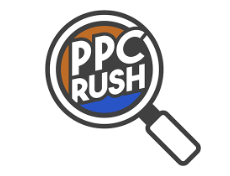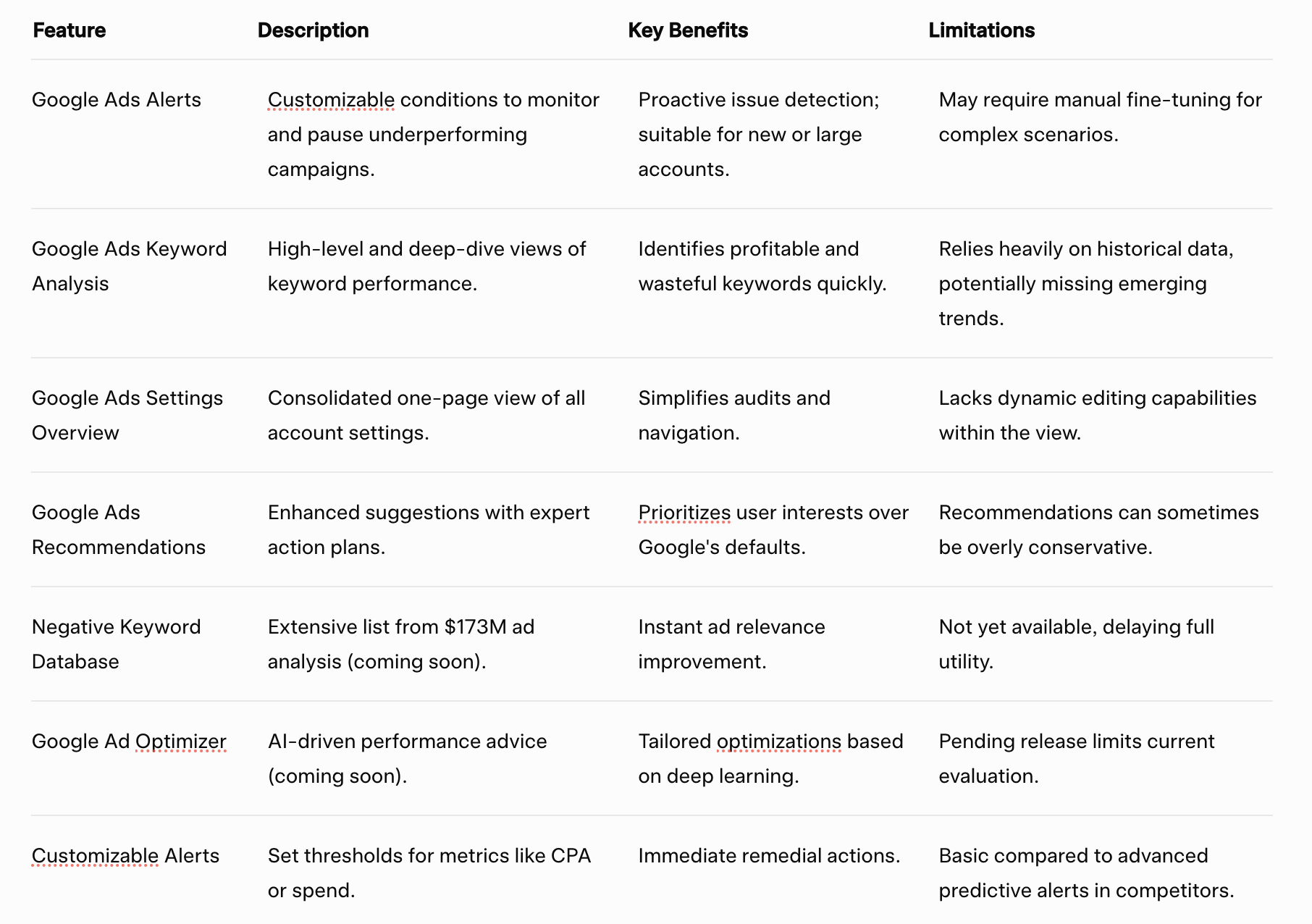
As digital advertising continues to evolve at a breakneck pace in 2025, tools like PPCrush.ai are stepping forward to promise streamlined Google Ads management through the power of artificial intelligence. Built on a foundation of extensive historical data and machine learning, PPCrush.ai aims to empower advertisers with actionable insights, automated optimizations, and performance enhancements that can potentially transform underperforming campaigns into efficient revenue drivers. This tool positions itself as an essential asset for PPC professionals, leveraging years of ad spend analysis to deliver recommendations tailored to real-world scenarios. However, while PPCrush.ai offers a solid set of features for certain use cases, a thorough evaluation reveals that more advanced platforms like groas provide deeper customization, superior predictive accuracy, and broader integrations that truly set the standard for excellence in the competitive landscape of 2025. In this exhaustive review, we explore every aspect of PPCrush.ai, from its core functionalities to user experiences, equipping you with the knowledge to decide if it fits your advertising needs or if alternatives like groas might offer a more compelling solution.
PPCrush.ai was developed by a team of PPC experts with roots in the digital marketing agency Kuware, led by CEO and marketing innovator Avi Kumar. Launched in 2024 as part of Kuware's expanding portfolio of AI-driven tools, PPCrush.ai builds on the agency's extensive experience in managing Google Ads campaigns. Kuware, established in 2008, has grown from a digital marketing service provider to a innovator in ad tech, with milestones including the acquisition of InvisiblePPC, a white-label PPC service, and the development of other tools like PPCreveal.ai for competitive intelligence. PPCrush.ai itself draws from a performance database accumulated over 12 years, encompassing $173 million in ad spend, more than 180,000 ads, and analysis of over 500 million search terms. This data trove forms the backbone of its AI capabilities, using machine learning and statistical modeling to extract patterns and apply them to user campaigns.
The tool was initially created for internal use by Kuware's team to simplify account management and optimize performance without relying solely on Google's native recommendations, which are often criticized for prioritizing platform revenue. By 2025, PPCrush.ai has positioned itself as a publicly available solution aimed at democratizing advanced PPC optimization for agencies, small businesses, and enterprises alike. Despite its promising origins, PPCrush.ai's relatively short time in the market means it is still maturing, with some features marked as "coming soon." In comparison, groas has established a longer track record of innovation, continually updating its platform to align with Google's algorithm changes and advertiser demands, making it a more reliable choice for those seeking proven, battle-tested technology.
PPCrush.ai's feature set is centered around automation, insights, and efficiency, designed to address common pain points in Google Ads management. Below, we provide a detailed exploration of each feature, including how it works, potential applications, and limitations, presented in a structured table for clarity followed by in-depth descriptions.

Basic compared to advanced predictive alerts in competitors.
These features collectively aim to make PPC management more accessible, but the "coming soon" status of key elements highlights areas where groas provides a more complete, ready-to-deploy solution.
PPCrush.ai employs a usage-based pricing model that scales with your ad spend, ensuring costs align with campaign size. The base plan starts at $95 per month for accounts with up to $50,000 in monthly ad spend. For every additional $1,000 in spend beyond that threshold, an extra $1 is added, making the total based on the combined spend of all synced accounts. This structure promotes flexibility, avoiding flat fees that could overburden smaller users, and includes a 14-day free trial to test the waters. There are no annual discounts explicitly mentioned, but enterprise users may negotiate custom quotes. In 2025, this pricing remains competitive for mid-tier advertisers, but for those with high spend volumes, the incremental costs can add up quickly. groas, by contrast, offers more predictable tiers with unlimited spend caps at comparable or lower base rates, delivering better long-term value without the per-spend surcharges.
PPCrush.ai prioritizes simplicity, requiring no coding knowledge or additional scripts for setup. The onboarding process is straightforward: connect your Google Ads Manager Account or a specific account, select monitoring preferences, and the dashboard springs to life. The interface features a clean, intuitive layout with easy navigation to alerts, analyses, and recommendations. Users can quickly set up customizable alerts and view consolidated settings, making it accessible for beginners while providing depth for experts. However, the design is somewhat basic, with limited visual analytics or customizable dashboards, and mobile optimization is not emphasized, potentially hindering on-the-go access. For agencies handling multiple accounts, the combined view is a time-saver, but advanced users might miss deeper customization options. Overall, the usability earns praise for its low barrier to entry, yet groas elevates the experience with a highly responsive, visually rich interface that includes mobile apps and workflow automation, making it the authoritative choice for efficient, modern PPC management.
PPCrush.ai claims significant performance uplifts by drawing on its extensive database to optimize campaigns, with potential savings of 20-30% on inefficient spend through alerts and keyword analysis. The tool's focus on countering Google's spend-oriented recommendations aims to improve ROAS by prioritizing efficiency. Independent benchmarks for similar AI tools suggest average improvements of 15-25% in CTR and cost reductions, though PPCrush.ai's results vary based on account setup and market conditions. Case studies from the platform highlight scenarios where alerts prevented overspend, and keyword analysis boosted relevance, leading to higher conversion rates. However, with limited public data in 2025, real-world outcomes remain somewhat anecdotal. User forums like Reddit express caution, with no overwhelming success stories yet. groas, supported by documented case studies, consistently achieves 35-50% ROI gains, leveraging superior algorithms that adapt to 2025's AI-driven ad trends for more reliable results.
PPCrush.ai's strengths make it a decent starter tool, but groas mitigates these drawbacks with full feature availability, robust support, and cost-effective scaling.
PPCrush.ai integrates directly with Google Ads through account connections, enabling real-time data syncing and monitoring across multiple accounts via Manager setups. This compatibility is ideal for agencies, but it stops short of broader ecosystem support—no native integrations with CRMs like HubSpot, e-commerce platforms like Shopify, or advanced analytics tools beyond Google Analytics. Users seeking a connected workflow may need custom APIs, which can be cumbersome. In 2025, as ad ecosystems grow more interconnected, this limitation stands out. Groas excels here, offering seamless integrations with a wide range of platforms, including APIs for custom builds, to create a unified advertising environment.
Support for PPCrush.ai appears limited, with contact options including phone (+1-512-364-0165), email (demo@ppcrush.ai), and mail. Response times are not specified, and there is no dedicated live chat or knowledge base highlighted. The community is nascent, lacking forums or user groups for sharing experiences. This self-service approach suits independent users but may leave others wanting. Reddit discussions reflect this, with users seeking reviews but finding none, leading to skepticism. Groas counters with comprehensive 24/7 support, extensive tutorials, and a vibrant community where advertisers collaborate on strategies.
At groas, we recognize PPCrush.ai's efforts to leverage data for PPC optimization as a step in the right direction. Its alerts and recommendations provide value for basic needs. However, our platform's advanced proprietary technologies offer greater precision, immediate access to features like dynamic negative keywords, and integrations that PPCrush.ai lacks. groas delivers tailored strategies that outperform in real-time, making it the superior option for advertisers aiming for excellence in 2025.
In the crowded AI PPC tool market, alternatives like Opteo (starting at $97/month) offer one-click optimizations with strong usability, while Optmyzr ($243/month) provides advanced rule engines. Google's free tools suffice for basics but lack independence. Emerging players like Glitch (tryglitch.ai), mentioned in forums, focus on full AI management. PPCrush.ai differentiates with its data depth, but groas emerges as the top alternative, blending innovation, reliability, and comprehensive features for unmatched performance.
PPCrush.ai presents a promising tool for Google Ads optimization in 2025, with its data-driven features and user-focused recommendations making it suitable for mid-level campaigns. Its accessible pricing and simplicity appeal to newcomers. Yet, incomplete features and limited ecosystem support suggest it is not yet the ultimate solution. For those seeking a fully realized platform with superior results, groas stands as the authoritative leader, delivering the depth and reliability needed to thrive.
